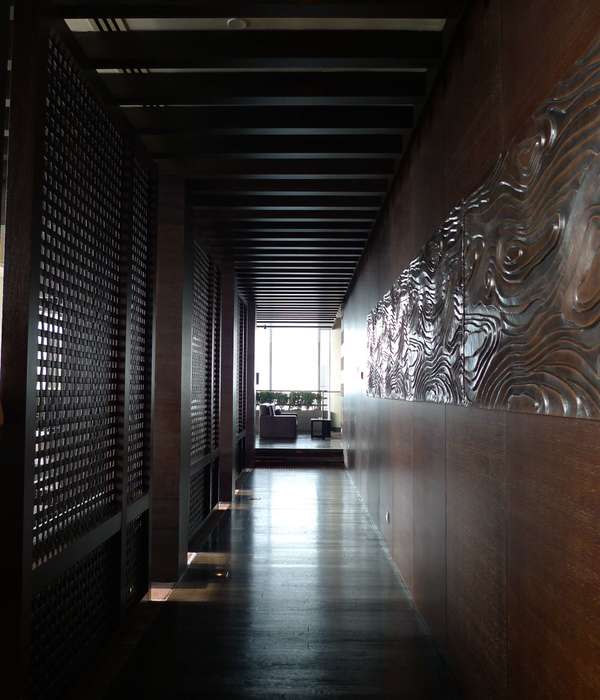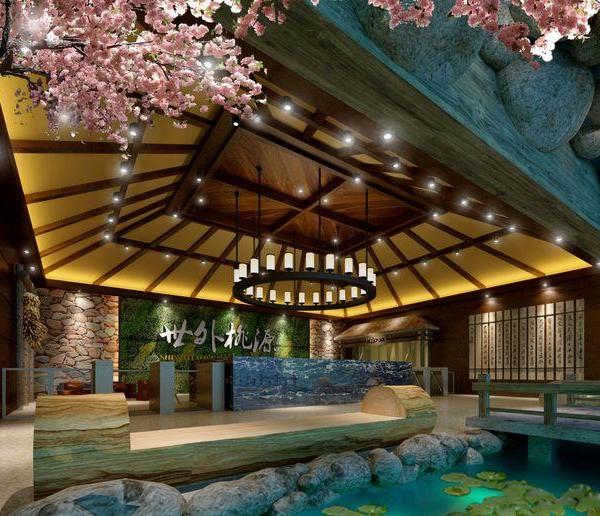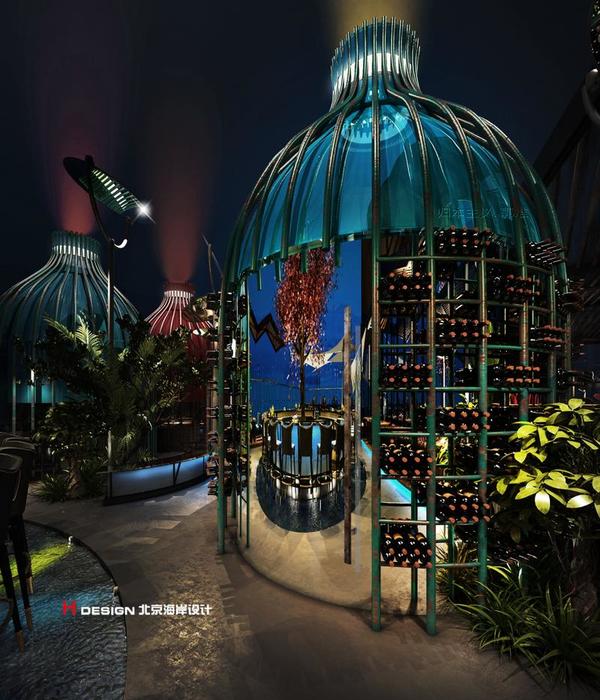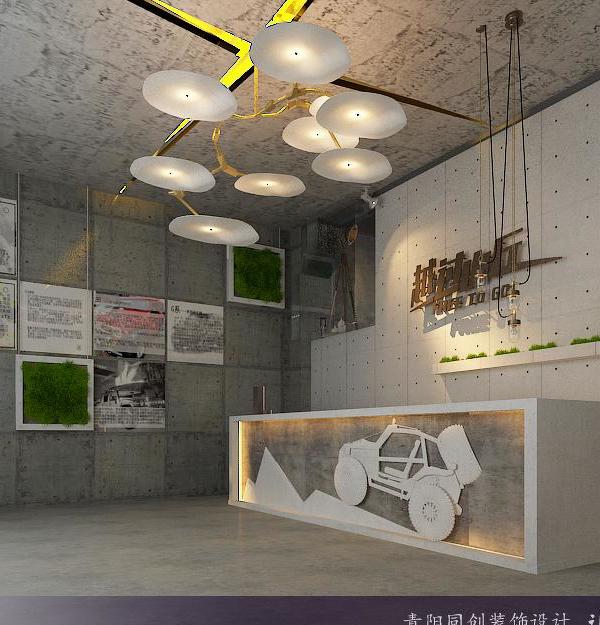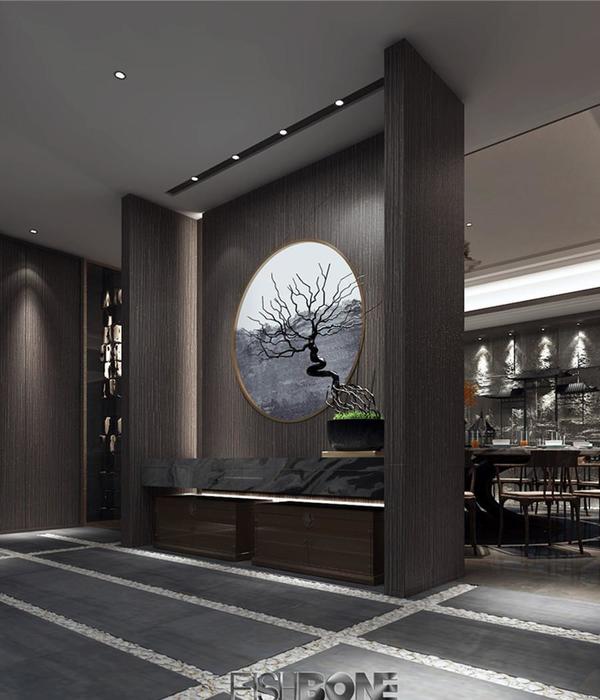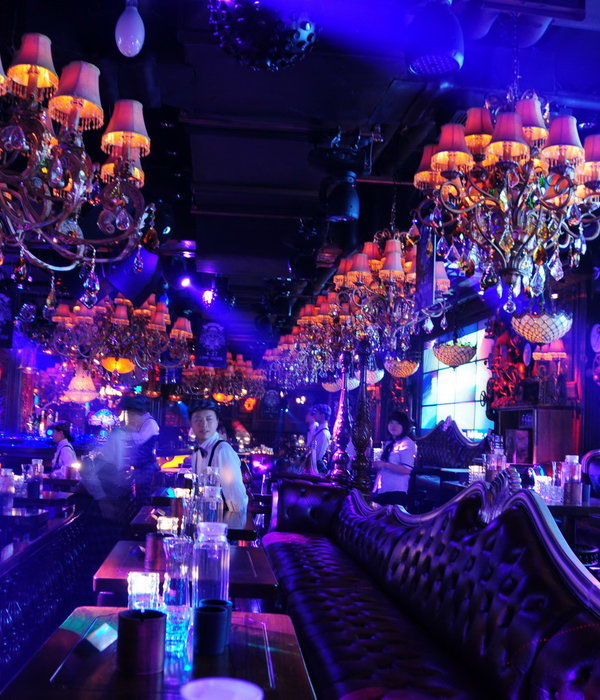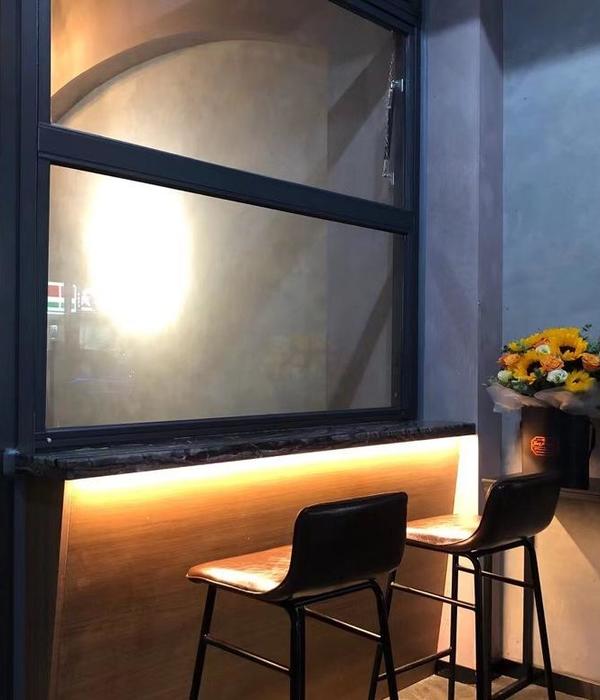▼夜景,night view © Yucen Zhao
平面由墙体塑造出空间感,使用一个类三角形水平楼板置于其上,其开放式的线条延伸至周围,模糊了室内/室外、进与出的概念;水平楼板的强烈平行线条视觉,将空间分成上与下;其下形成众多开放欢迎的入口意象,其上凸显树梢的自然有机,而屋面上摆放竖向的当地石头,呼应背景的远山。
▼开放式的线条延伸至周围,open lines extending to the surrounding area © Metrics Architecture Studio (MAS)
The plan is shaped spatially by the walls, and the use of a triangular-like horizontal floor slab placed on top of it, with its open lines extending to the surrounding area, blurs the notion of indoor/outdoor, in and out; the strong visualization of the horizontal slab’s parallel lines divides the space into upper and lower; the lower part of it creates a multitude of open and welcoming entrances, while the upper part accentuates the natural and organic nature of the treetops, and the vertical local stone placed on the roof echoes the distant mountains in the background. The roof of the building is lined with vertical local stones, echoing the distant mountains in the background.
▼傍晚景色, dawn scenery © Yucen Zhao
▼立面上的光影变化,light and shadow changing on the facade © Yucen Zhao
▼细部,detail © Yucen Zhao
▼ 模型概念图,conceptual collage © Metrics Architecture Studio (MAS)
▼平面,plan © Metrics Architecture Studio (MAS)
▼让人停留的空间,resting area © Yucen Zhao
Initially, this was a project about functionality and efficiency, an entry pavilion for a mental hospital located in southern Taiwan. It serves as a gate entry which can transform to a fever screening station during the pandemic.
▼项目概览,project overview © Yucen Zhao
与其用刚硬的一条直线分割院区与外界,建筑师创造了连续渐变的空间领域,一方面作为医院园区与外在急行道路的过渡,更是一个特别的集体空间,不同使用方式的可能性大大增加,成为一个病患与医疗人员互动的载体。
Instead of building a linear wall we created a boundary with layer of spaces, which serves as a transition between the hospital campus and the external highway, also creates a series of collective spaces which has potential for multi-functional use which also kept the building’s gesture more welcoming than a wall with a guard post.
▼连续渐变的空间,a series of collective spaces © Yucen Zhao
依着太阳的方向、树木、风向与各空间的功能关系,建筑师创造了一种策略,透过L 型的墙体,营造出违和、开放一体两面的空间秩序,流动与让人停留的小下沉与室内功能区交错存在。
It is composed by L-shaped walls which follows an order that is based on the position of the sun, the trees, and the relationship between the different functions, a bus stop, coffee stand and different resting area, which also trigger discussions the flexibility of how buildings could be used during/after times of the pandemic.
这是一个坐落于台湾南部功能与效率要求明确的项目,是医院入口的亭楼。基地上的挑战为如何对应两侧相异的情况,一是车流众多的快速道路,另侧是宁静的院区,考量院区的保护与隐私,同时须维持通透欢迎的空间感。除了分流进出人员,大巴/汽車等候初还需在特殊疫情时刻,于医院建筑之外的发烧筛检站,能具多功能使用的可能性也是该项目的一个重点。
朴实的混凝土材料像是画布,最大化地呈现自然光影、风的对流与落雨等元素的感知。除了满足必要功能,设计师更希望这是一个有趣的、可随时间变化的空间体验容器,对周围环境形成持续的框景。使用者可以根据他对空间的需求,找到适合自己身体与心理舒适的空间。
The walls form fluid spaces and more closure ones at the same time by its different side, using raw exposed concrete as the main material emphasizes the perception of nature such as the light and shadows, the breeze and falling rain..etc for the users. It’s open plan composed by designed-geometry elements of walls, patch-like spaces and linear elements merging into the surrounding landscape blurring the feeling of inside and outside bringing nature to become a part of the building.The pavilion becomes a vessel for creativity, art and nature, its diversity of spaces encourages users to find a space that suits their physical and psychological comfort based on their need which also creates opportunities for patients and doctors engaging in a more relaxing atmosphere.
▼朴实混凝土构成的空间,space composed with raw concrete © Yucen Zhao
{{item.text_origin}}

